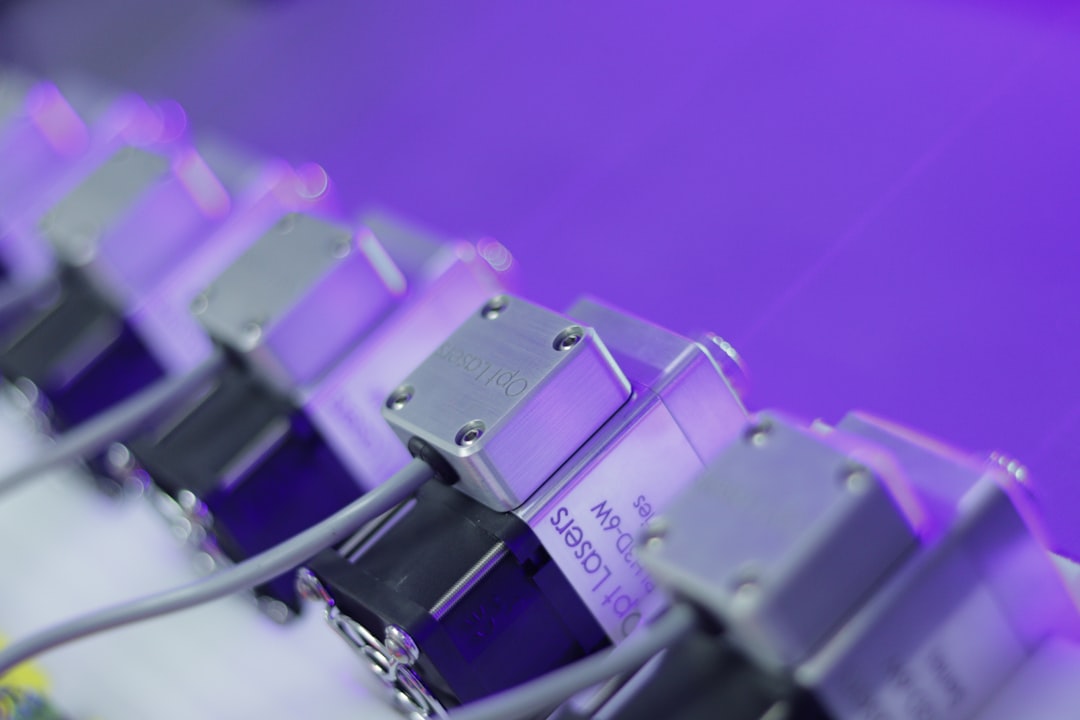Laser hair removal is a popular cosmetic procedure that utilizes concentrated beams of light to target and eliminate unwanted hair. The technology behind this method is based on the principle of selective photothermolysis, where the laser light is absorbed by the pigment in the hair follicles. This absorption generates heat, which effectively destroys the hair follicle while leaving the surrounding skin unharmed.
As you consider this option, it’s essential to understand how the process works and what to expect during your treatment sessions. The procedure typically involves multiple sessions to achieve optimal results, as hair grows in different cycles. During your initial consultation, a qualified professional will assess your hair type, skin tone, and overall health to determine the best approach for you.
The laser can be adjusted to suit your specific needs, ensuring that the treatment is both effective and safe. Many individuals find that laser hair removal not only reduces hair growth significantly but also leads to smoother skin over time, making it an appealing choice for those tired of traditional hair removal methods.
Key Takeaways
- Laser hair removal uses concentrated light to target and destroy hair follicles, leading to long-term hair reduction.
- Safety considerations for bikini area laser hair removal include avoiding sun exposure, discontinuing certain hair removal methods, and disclosing any medical conditions or medications to the provider.
- Potential risks and side effects of laser hair removal may include skin irritation, redness, and changes in skin pigmentation.
- Preparing for laser hair removal involves avoiding sun exposure, shaving the treatment area, and refraining from using certain skincare products.
- Choosing a qualified professional for laser hair removal is important and involves researching their credentials, experience, and the technology they use.
- Aftercare and recovery from laser hair removal may include applying soothing creams, avoiding sun exposure, and following the provider’s post-treatment instructions.
- Long-term results and maintenance of laser hair removal may require multiple sessions for optimal results and occasional touch-up treatments.
- Alternative hair removal methods to consider include waxing, shaving, depilatory creams, and electrolysis, each with their own pros and cons.
Safety Considerations for Bikini Area
When it comes to laser hair removal in sensitive areas like the bikini line, safety should be your top priority. The skin in this region is more delicate and prone to irritation, so it’s crucial to choose a clinic that prioritizes safety protocols. Before undergoing treatment, you should discuss any concerns with your practitioner, including your skin type and any previous skin conditions.
They will likely perform a patch test to ensure that your skin reacts well to the laser before proceeding with full treatment.
This may include avoiding sun exposure and certain skincare products that could irritate your skin.
Your practitioner may also recommend shaving the area a day or two before your appointment to ensure that the laser can effectively target the hair follicles without interference from longer hair. By taking these precautions, you can help ensure a safer and more comfortable experience during your bikini area laser hair removal.
Potential Risks and Side Effects
While laser hair removal is generally considered safe, it’s essential to be aware of potential risks and side effects associated with the procedure. Common side effects include temporary redness, swelling, or mild discomfort in the treated area. These symptoms usually subside within a few hours to a couple of days.
However, in some cases, you may experience more significant reactions such as blistering or changes in skin pigmentation. It’s crucial to discuss these possibilities with your practitioner during your consultation so you can make an informed decision. Another risk to consider is the potential for ingrown hairs, which can occur if hair follicles become blocked during the healing process.
While laser hair removal aims to reduce this issue over time, it’s still a possibility that you should be prepared for. To mitigate these risks, following aftercare instructions diligently is vital. This includes avoiding sun exposure and refraining from using harsh skincare products on the treated area until it has fully healed.
Preparing for Laser Hair Removal
| Aspect | Information |
|---|---|
| Preparation | Avoid sun exposure and tanning beds for at least 6 weeks before treatment |
| Shaving | Shave the treatment area the day before the appointment |
| Medications | Avoid certain medications like blood thinners before the procedure |
| Cosmetics | Avoid using cosmetics, lotions, and deodorants on the treatment area before the appointment |
Preparation is key to ensuring a successful laser hair removal experience. Before your appointment, you should schedule a consultation with your practitioner to discuss your goals and expectations. During this meeting, they will evaluate your skin and hair type and explain what you can expect during the procedure.
It’s also an excellent opportunity for you to ask any questions or voice concerns you may have about the process. In the days leading up to your treatment, there are several steps you can take to prepare effectively. First, avoid sun exposure as much as possible; tanning can increase the risk of complications during treatment.
Additionally, refrain from waxing or plucking hairs in the area you wish to treat for at least four weeks prior to your appointment, as these methods can disrupt the hair growth cycle that laser treatment relies on. Shaving the area a day or two before your session is typically recommended, as it allows the laser to target the hair follicles directly without interference from longer hairs.
Choosing a Qualified Professional
Selecting a qualified professional for your laser hair removal is one of the most critical steps in ensuring a safe and effective experience. Look for practitioners who are licensed and certified in laser treatments, as this indicates they have undergone proper training and adhere to industry standards. You may also want to read reviews or ask for recommendations from friends or family who have undergone similar procedures.
During your initial consultation, pay attention to how comfortable you feel with the practitioner. They should take the time to answer your questions thoroughly and explain the procedure in detail. A good professional will also assess your skin type and hair color to determine the most suitable laser technology for you.
Trusting your practitioner is essential; after all, you want someone who prioritizes your safety and well-being throughout the process.
Aftercare and Recovery
Aftercare is a crucial aspect of the laser hair removal process that can significantly impact your results and overall experience. Immediately following your treatment, you may notice some redness or swelling in the treated area; this is normal and should subside within a few hours. To help soothe any discomfort, applying a cool compress can be beneficial.
Your practitioner may also recommend specific topical treatments or creams to aid in recovery. In the days following your session, it’s essential to avoid sun exposure on the treated area as much as possible. Wearing sunscreen with a high SPF is advisable if you must go outside.
Additionally, steer clear of hot baths, saunas, or vigorous exercise for at least 24 hours post-treatment, as these activities can exacerbate irritation. Following these aftercare guidelines will help ensure that your skin heals properly and that you achieve the best possible results from your laser hair removal sessions.
Long-term Results and Maintenance
One of the most appealing aspects of laser hair removal is its potential for long-term results. Many individuals experience a significant reduction in hair growth after completing their treatment sessions, often leading to smoother skin and less frequent need for hair removal methods like shaving or waxing. However, it’s important to note that results can vary based on factors such as hair type, skin tone, and hormonal changes.
To maintain your results over time, periodic maintenance sessions may be necessary. These touch-up treatments can help address any remaining hair follicles that were not fully eliminated during initial sessions or any new growth that may occur due to hormonal fluctuations. Your practitioner will provide guidance on how often these maintenance sessions should be scheduled based on your individual needs.
Alternative Hair Removal Methods
While laser hair removal offers many benefits, it’s not the only option available for those seeking smooth skin without unwanted hair.
Each method has its pros and cons; for instance, shaving is quick and easy but often leads to stubble within days, while waxing provides longer-lasting results but can be painful.
Other alternatives include electrolysis, which involves using an electric current to destroy individual hair follicles permanently. This method can be time-consuming but may be suitable for those with lighter hair colors that are less responsive to laser treatments. Additionally, at-home devices have become increasingly popular; however, their effectiveness can vary widely compared to professional treatments.
Ultimately, choosing the right method depends on your personal preferences, pain tolerance, and desired results. In conclusion, understanding laser hair removal involves considering various factors such as safety precautions, potential risks, preparation steps, and aftercare requirements. By choosing a qualified professional and being informed about alternative methods, you can make an educated decision about whether this treatment aligns with your goals for smooth skin free from unwanted hair.
If you are considering laser hair removal for your bikini area, you may be wondering if it is safe and effective. According to a recent article on inlaserhairremoval.com, laser hair removal is a popular choice for many women looking to achieve smooth, hair-free skin in their bikini area. The article discusses the benefits of laser hair removal and addresses common concerns about the procedure. It is important to consult with a qualified professional to determine if laser hair removal is the right choice for you.
FAQs
What is laser hair removal?
Laser hair removal is a cosmetic procedure that uses a concentrated beam of light (laser) to remove unwanted hair. The laser targets the pigment in the hair follicles, damaging them and inhibiting future hair growth.
Is laser hair removal safe for the bikini area?
When performed by a qualified and experienced professional, laser hair removal is generally considered safe for the bikini area. However, there are potential risks and side effects, so it’s important to consult with a dermatologist or licensed technician before undergoing the procedure.
What are the potential risks of laser hair removal for the bikini area?
Some potential risks of laser hair removal for the bikini area include skin irritation, redness, swelling, and changes in skin pigmentation. In rare cases, blistering, scarring, or infection may occur. It’s important to follow pre- and post-treatment care instructions to minimize these risks.
Is laser hair removal painful for the bikini area?
Laser hair removal for the bikini area can cause some discomfort, but the level of pain varies from person to person. Many individuals describe the sensation as a mild stinging or snapping feeling. Some clinics offer numbing creams or cooling devices to help minimize discomfort during the procedure.
How many sessions are typically needed for laser hair removal in the bikini area?
The number of sessions needed for effective hair removal in the bikini area varies depending on factors such as hair color, thickness, and skin tone. On average, most people require 6-8 sessions spaced several weeks apart to achieve optimal results.
Are there any specific precautions to take before and after laser hair removal for the bikini area?
Before undergoing laser hair removal for the bikini area, it’s important to avoid sun exposure and tanning beds, as well as certain hair removal methods such as waxing or plucking. After the procedure, it’s recommended to protect the treated area from sun exposure and follow any post-treatment care instructions provided by the technician.








